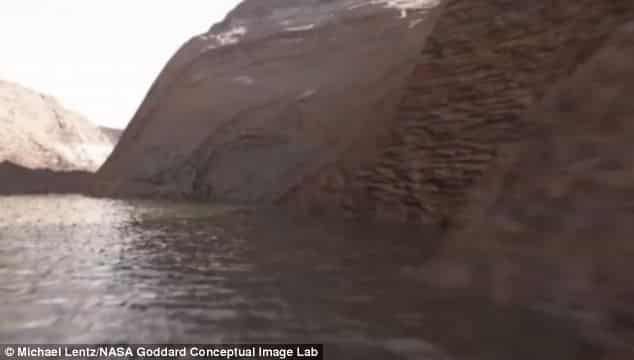Water is essential for supporting life. Space agency NASA believes that Mars has the capability to support life or once upon a time it had supported life. We already reported that Mars rover Curiosity has found ancient lakebed on Mars. And now NASA says that ancient lakebed may have supported life on Mars 3.6 billion years ago.
If a planet contains water, that bears the sign that it may capable to support life. At present, red planet Mars is a cold and barren desert world, with no apparent sign of life. But for long time, many researchers have been believing that once upon a time Mars had supported life. The speculation might not be false as NASA has said that it has found a strong evidence that Mars could have supported life in distant past. That’s not all. The agency’s another rover has found drinkable water on Mars. These hints obligate us to think that Mars has or once upon a time had water. These two exciting hints have inspired scientists to study more and more about Mars. Therefore, NASA has already planned to send a new rover to Mars.
On the other side, earlier we have seen NASA revealing a video about how Mars looked like 4 billion years ago. The video hints that what Mars may have looked like if its atmosphere allowed for water. According to that video, 4 billion years ago Mars looked just like Earth. The climate of Mars, for billion years ago, was warm and wet. There was lakes with full of water and the water used to flow into the craters. Besides, the sky was blue too like the Earth’s sky.
However, now NASA is saying firmly that an ancient fresh water lake on Mars could have sustained life on the red planet 3.6 billion years ago. NASA scientists reveal that 3.6 billion years ago the Mudstones from Gale Crater, the landing site of the Curiosity rover, were formed in a lake that may have existed on the planet for hundreds of thousands of years. The 150 kilometer-wide (93-mile) impact basin, with a mountain at its center, might have supported the lake.
The analysis of NASA scientists has shown that the lake was calm and likely had fresh water, containing key biological elements including carbon, hydrogen, oxygen, nitrogen and sulphur. Considering the fact, NASA claims that such a lake can provide perfect conditions for simple microbial life.
Professor Sanjeev Gupta, one of the NASA scientists said, “It is important to note that we have not found signs of ancient life on Mars. What we have found is that Gale Crater was able to sustain a lake on its surface at least once in its ancient past that may have been favorable for microbial life, billions of years ago. This is a huge positive step for the exploration of Mars. It is exciting to think that billions of years ago, ancient microbial life may have existed in the lake’s calm waters, converting a rich array of elements into energy. The next phase of the mission, where we will be exploring more rocky outcrops on the crater’s surface, could hold the key whether life did exist on the red planet.”
The findings have been published in the Journal Science.
Source: Daily Mail
[ttjad keyword=”keyboard”]



